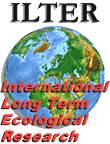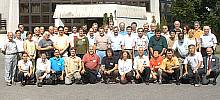ILTER Network Summit – Focusing on long-term ecological research
|
- Dr Amani Saidi, Manager: Stakeholder Relations, SAEON
In August this year, long-term ecological research scientists from all corners of the world gathered in Slovakia for the annual meeting of the International Long-Term Ecological Research (ILTER) networks.
As is customary at ILTER network summits, the first day was set aside for regional networks to meet and deliberate on region-specific issues and prepare regional reports to be presented during the business meetings.
Five ILTER regional networks were represented at the summit: North America, Central and Southern America, Europe, South East Asia and the Pacific, and the Network of Environmental Long-term Observatories of Southern Africa (ELTOSA).
In the absence of the Chairperson of ELTOSA, Johan Pauw, Managing Director of SAEON and a former Chairperson of ELTOSA, convened and chaired the ELTOSA regional meeting, and prepared the report which he subsequently presented to the general ILTER Business Meeting.
The report highlighted the long-term observation achievements in the member countries, the ELTOSA meeting hosted by SAEON in 2007, progress made towards developing a regional research agenda and proposal for funding, as well as Botswana’s expression of interest towards joining ILTER and ELTOSA. It also outlined challenges of funding and capacity that threaten activities in most ELTOSA member networks.
Examining the links between anthropogenic and natural global change
Proceedings during the science session revolved around ILTER’s pilot project that seeks to provide a universally applicable framework for understanding the linkages between anthropogenic and naturally-induced environmental change. Dubbed as the “Integrative Science for Society and the Environment (ISSE) Framework”, its purpose is to enhance the understanding and ability to predict and model interactions among ecosystem services, ecosystem dynamics, and human outcomes and behaviour.
Prior to the meeting in Slovakia, networks were given the opportunity to interrogate the foundations of the framework, and to carry out preliminary assessment of its applicability in chosen sites representing particular biomes. Some networks that were ready to discuss the preliminary findings of their assessments were given the opportunity to present these at the session.
Otherwise, much time was spent on discussing the finer details of the ISSE Framework to ensure that delegates would have no problem in applying it after the return to their respective countries. Networks were expected to report their findings to the ILTER Science Programme Committee by mid-October 20081. It is envisaged that a synthesis of the findings from the different LTER networks will show whether the ISSE Framework generates similar results in different biomes and in different geographical locations.
The business part of meeting also went on for two days. On the first of these, delegates received and deliberated reports from the regional networks and from the various ILTER subcommittees. SAEON is actively represented in two of the sub-committees — the Public Policy subcommittee and Information Management subcommittee.
On the penultimate day of the ILTER Meeting, delegates extensively discussed business matters including ILTER’s finances, the proposal to establish an ILTER Secretariat, a proposal to partner the United Nations Environmental Programme (UNEP) in identifying LTER sites to use in monitoring and learning about human adaptations to climate change, and challenges of capacity building in long-term ecological research areas.
ILTER continues to expand its membership base and currently has 38 member countries. At the 2008 meeting both Spain and Portugal presented their applications to join the organisation and Chile sent a representative in an observer capacity. SAEON's contribution was submitted by Dr Nicky Allsopp, Manager of the SAEON Fynbos Node.
1 SAEON's contribution was submitted by Dr Nicky Allsopp, Manager of the SAEON Fynbos Node. A detailed article on the contribution will be published in the next issue of SAEON eNews.
Related content: Pilgrimage to the mighty Tatra Mountains












